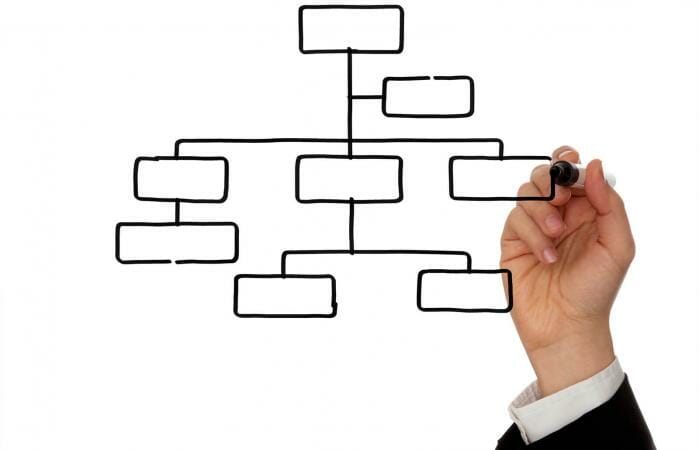Job Systematization
“The most significant reason for the constant success of some companies is continuous change.” S. Smith
Systematization is a concise list and description of tasks that employees perform in their positions. Each job position with a specific title corresponds to a specific list and description of tasks. The list and description of tasks in systematization are considered the basis for establishing employment relationships and an integral part of the Employment Contract.

REASONS FOR JOB SYSTEMATIZATION

Legal Changes
The Labor Law (Article 26) indicates the employer’s obligations – “An employer who employs at least twenty workers is obliged to adopt and publish work regulations regulating salaries, work organization…”

Technological Changes
The introduction of new information and technological business solutions leads to a new division of labor and responsibilities among employees. Previous job positions take a back seat, new job positions become essential, while salaries remain disproportionate to the actual work and responsibility in a specific position within the company.

Organizational Changes
Organizational changes such as high employee turnover, job division, job consolidation, etc., over time lead to a new business structure and relationships, but there are still ‘outdated documents’ that serve no purpose and can be detrimental to the employer in the case of a labor dispute.
Companies that have grown rapidly with an increased number of employees, unclear or poor communication among employees, or nonexistent communication, leading to frequent misunderstandings, have a significant need for precise job definition and task delegation.

Alignment with the Labor Market
For certain positions requiring specialized experts, employers may find it challenging to identify suitable candidates. Therefore, quality job systematization can be a prerequisite for solving such a problem.

Introduction of Motivation and Reward Systems
Companies that want to establish a motivation and reward system through salaries and bonuses can achieve this by introducing job systematization.
Verification, Adaptation, and Revision
Job descriptions are subject to frequent changes; therefore, every company today should have a established schedule for their verification, adaptation, and revision.
The recommended time period for job description verification is one year. Due to the extent, in larger companies with an exceptionally large number of job positions, it is not realistic to expect that all job positions can be verified annually.
Therefore, the recommendation is to verify, adapt, and revise job descriptions for:
– Job positions where the job content has changed during the year
– Job positions for which there has been a change in the organizational structure
– Job positions for which supervisors request verification or adaptation of the description
– Job positions whose content changes due to changes in technology and work organization in accordance with employee-justified requests
In practice, job position systematization often has the reputation of a bureaucratic document described with epithets such as “outdated,” “tailored to individuals rather than the actual needs of the job,” “inapplicable,” “incomplete,” “necessary evil,” etc.
A negative attitude towards the job position systematization document determines how it is created (often by copying), how often it is revised (usually very rarely), and for what purpose it serves (meeting legal requirements).

Main prerequisites for a quality and suitable job position systematization are:
– Adopt a methodology for implementing the project of revising existing or introducing new job position systematization in the company.
– Learn what makes a quality job activity description.
– Equip yourself with quality forms for conducting job position analyses.
– Study examples of detailed and comprehensive job position descriptions.
– Familiarize yourself with the most important competence models and their descriptions.
– Recognize the opportunity to apply competence model descriptions in practice to job position descriptions in your company.
The most common and main shortcomings of existing job position systematizations are:
– Job titles do not reflect the nature of the work (it is not clear what the employee does).
– Several job positions need to be introduced instead of one generic position covering various job descriptions.
– New job titles need to be introduced because the introduction of new business processes is not in line with changes in systematization.
– The main business activities that the employee must perform at the job position are not listed (either by the amount of time needed to perform them or by importance).
– Business activities are not precisely described but are listed in general terms.
– Listed business activities that the employee does not perform at the job position (outdated description).
– Additional competencies (knowledge, skills, and abilities) that the employee needs to meet to qualify for the job position are not listed alongside special working conditions such as professional qualifications, years of work experience, knowledge of foreign languages, etc.
– Since additional competencies are not detailed, there is no room to indicate the extent to which they should be expressed on a scale and how to “measure” them.
– Due to these situations, when it is necessary to advertise a job position in practice, using generic descriptions from systematization with potential candidates creates a sense of uncertainty about the exact job position they are applying for.
Employees may be unfamiliar with how progression occurs within the company and what conditions they need to meet for it to happen (what knowledge, skills, and abilities a specific job position requires). Work productivity is questionable because it is not clear what and how is measured and with what impact on business results.
NOS d.o.o. for business consulting can assist you in developing job position systematization, achieving multiple benefits for your company through the following main steps:

- Recording and diagnosing the current state in the company
- Registering job positions and tasks according to business departments or filling out job analysis questionnaires by employees
- Creating job position systematization and company hierarchy
- Proposal for redesigning organizational structure, job position systematization, etc.
- Based on accepted proposals, supplementing the created documentation and/or negotiating further projects
Job position systematization describes various relevant information that may include:
– Basic information (job title, organizational unit name – department, superior and subordinate job positions, etc.)
– Job purpose (the reason for its existence)
– Key responsibilities, authorities, and tasks (main tasks, additional tasks)
– Required competencies for the job position (knowledge and qualifications, education, experience, professional and personal skills)
– Working conditions
– Career development opportunities
A good job description:
– Indicates the basic purpose of the job position
– Lists main duties and responsibilities along with their specific outcomes
– Does not detail every aspect of the job, focusing on what is characteristic for that specific position
– Focuses on the job, not the employee
– Is periodically reviewed
Is there a clear division of labor and high-quality job descriptions in your company?
Is there an organized structure of work and responsibilities in your company?
Our previous experience has shown us that the organizational concept is a crucial process for the success of managing processes and people. It involves a series of decisions related to the form, overall system, and characteristics of the organization, which we define through systematization, job descriptions, and hierarchical division of job positions.

Benefits of job systematization for your company and employees:
Every employer’s need is efficient, competent, and satisfied employees, so through job descriptions, it is possible to communicate clearly to employees what is expected of them in the workplace.
If employees have accurate and clear information about what is expected from them and how on the job, work motivation increases, and there is a higher likelihood that they will perform tasks efficiently.
The primary purpose is to clarify responsibilities at the company level. The goal is to clearly define the scope, content, and complexity of a specific job at a level that is necessary and acceptable to your company.
The introduction of job systematization does not have to happen quickly; depending on the size of the company and the number of positions, it may take a year or more, either independently or with the help of external consultants. However, it will certainly have far-reaching and positive consequences if you prepare well and establish a quality team of collaborators.

Well-prepared job systematization with precise job descriptions and supplemented competencies can serve as the basis to support other organizational processes:
– Quality and simpler selection of new employees
– Employee education
– Employee performance assessment
– Career development
– Determination of breaches of work obligations
– Labor disputes
The project “Job Systematization” ensures:
– Proper and equitable division of labor
– Optimal and equitable utilization of employees’ work and their professional and personal abilities
– Effective management at all levels
– Coordination and supervision of job execution
Contact Us
Need help?
Feel free to contact us. We will contact you as soon as possible.
info@nos.hr
+385 01 64-385-64
